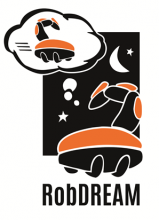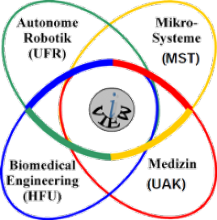Imagine the implementation of mobile robotics in your production scenario would work this way. The mobile manipulation system you bought is equipped with state-of-the-art techniques for navigation, perception and manipulation. You can set up your application in just a few simple steps and the built- in-intelligence does all the rest.
Even if the first solution of your robot application may not show optimal results, its performance increases after each shift, without tuning or repeated visits of your system integrator. The depicted scenario is not a dream; it is the envisioned goal of the RobDREAM action, where leading scientists and technology providers will help robots improving their daily work over night.








